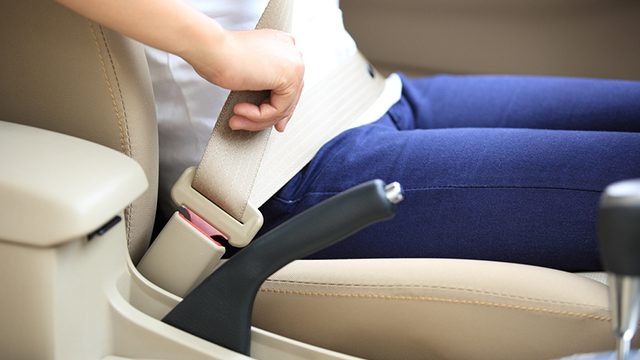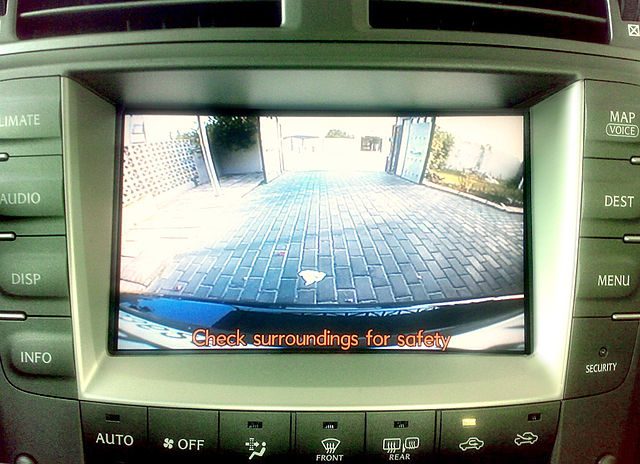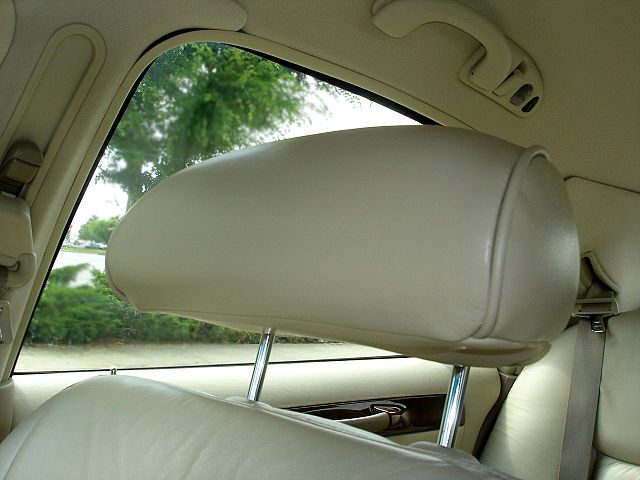SUMMARY
This is AI generated summarization, which may have errors. For context, always refer to the full article.

MANILA, Philippines – Seatbelt, brakes, lights, mirrors. We check our cars over and over, hoping to never be caught in one of the thousands of vehicular crashes that happen every month. But the fast-paced, technologically advanced lifestyle we now live brings a multitude of distractions, from phones constantly buzzing to radios blasting songs that break our concentration.
With Metro Manila recording more than 109,000 road crashes just last year, plus a traffic situation ranked among the worst in the world, it’s no surprise the Philippines is deemed one of the worst countries for drivers. (READ: IN NUMBERS: Road crash incidents in the Philippines)
But thankfully, technology too offers futuristic solutions which can prevent road crashes. Today’s modern cars have a host of safety features to ensure that all road users – from the driver, to the passenger, to pedestrians and cyclists sharing the road – remain safe.
Here are just some of the safety features that you can find in modern vehicles.
Adaptive Cruise Control
The adaptive cruise control feature is ideal for moderate to heavy traffic situations as it uses radars and cameras to maintain a safe following distance. It does so by adjusting the vehicle’s speed according to speed and distances of vehicles ahead.
Airbags
Front and side airbags inflate upon impact or collisions to prevent passengers from hitting the windows, the dashboard, or the steering wheel. But it’s important to note that injuries may also result from the deployment of airbags.

Backup Cameras and Sensors
Backup cameras and sensors alert drivers and allow them to view objects or persons in their path while reversing. Usually, these cameras come with trajectory lines or distance and proximity readings. Though many old models of vehicles don’t come with this feature, one can easily purchase and install backup cameras or sensors.
Antilock Brake System (ABS)
The Antilock brake system prevents wheels from locking up and tires from skidding or sliding, thus allowing drivers to be more in control of steering.
Attention Detection
The dragging Manila traffic can cause anyone to be drowsy on the road. The attention detection system uses sensors to study one’s driving patterns, then sounds an alert when it detects erratic driving, such as sudden deceleration or changing of lanes.
Automotive Emergency Braking or Forward Collision Warning
As the name suggests, forward collision warnings notify drivers when a crash is imminent. If the driver does not take action, the car itself makes use of its maximum braking capacity. This type of safety feature also takes into consideration the speed of the car before the potential crash.
Blind-Spot Monitoring
Blind-spot monitors make use of warning lights mounted to side mirrors. Using radars or cameras, they detect objects that are located at the driver’s blind spot, and alert the driver if it is unsafe to shift lanes or if there is an imminent collision.

Head Restraints
Head restraints are installed and fitted in the front and rear seats of cars. They are made to protect one’s neck from injuries by improving head rest position and preventing whiplash during a crash.
Intelligent Speed Assist (ISA)
Intelligent Speed Assist notifies drivers when they exceed the speed limit of a certain area. By increasing the pressure on the car’s accelerator, more advanced ISA systems actually prevent drivers from going faster when they exceed the speed limit.
Lane-keeping Assist
Lane departure warnings can detect when a driver drifts off the road or changes lanes unintentionally. Some lane support systems not only give audible signals, but also automatically steer cars back into the lane.
Though many of these features either come only with the latest vehicle models, or may be purchased separately, the idea stays the same – responsibility equates to road safety. Knowing and understanding how your car works saves time, costs, and lives. – Rappler.com
Gari Acolola is a Rappler intern
Add a comment
How does this make you feel?
There are no comments yet. Add your comment to start the conversation.